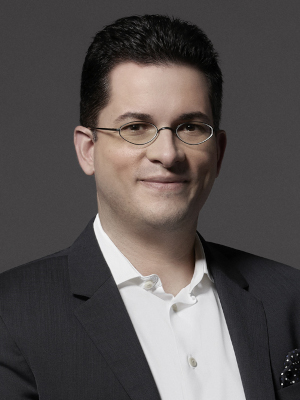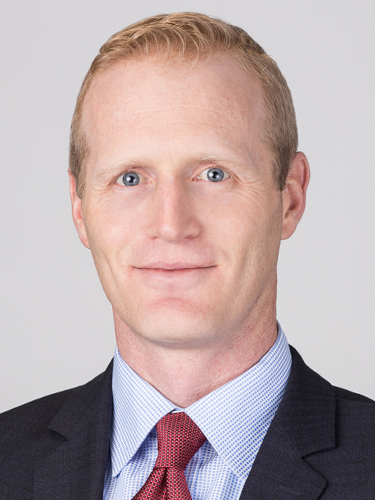Some family members want a pension-style, steady-as-she-goes approach to managing their investment portfolios. Others see emerging opportunities such as artificial intelligence as a way to grow the family wealth more substantially.
This difference in investment styles is common among Canada’s wealthiest families as they seek to strike a balance between generating income for today amid modest growth, preserving capital for future generations, and investing in higher-risk opportunities to build wealth.

“This really illustrates how different experiences often inform different asset mixes,” says Athas Kouvaras, client relationship and development manager and portfolio manager with Richter Family Office in Toronto.
Most often, the divide is generational, with older family members preferring a balanced portfolio to meet immediate needs and provide wealth for future generations after they’re gone.
Younger generations, however, may seek to put their own stamp on investments. This mismatch can lead to intergenerational family feuds.
Disappointed younger family members often simply tune out and become disconnected from the family enterprise altogether, says Patrick O’Connor, chief executive officer of Blackwood Family Enterprise Services in Winnipeg. “The key [to avoiding that outcome] is for families to work on their long-term vision and values that will define the guardrails for investing.”
Professionals serving ultra-high-net-worth families should be adept at helping clients navigate these tumultuous waters.
First and foremost, families need to be aligned on what the money is for, O’Connor says. “The process starts with the family values as defined by a family council.”
Most family members typically agree that they want to both preserve the money and grow it for the long term. The disagreements come with the “how.”
When you actually dig in to what’s going on, you sometimes find that the next generation has really been sidelined.
Shelley Forsythe, BMO Family Office Canada
To start, any framework should ensure that the up-and-coming adults in the family are included in a meaningful way.
“It’s a common theme: considering how to integrate the next generation into the decision making process,” says Eric Weir, president and chief executive officer at Northwood Family Office in Toronto.
But it’s necessary if they are the heirs-apparent and the wealth is expected to grow as the family does. Integration should occur before family members reach adulthood, Weir says, with younger family members learning about the family wealth early on.
Families can transition wealth leadership “naturally,” he adds, through a family governance framework along with an investment council and an overarching investment policy statement (IPS).
Building these structures involves advisors asking the family many questions.
Kouvaras says, “A lot of it is about understanding individual experience: What has resonated with you? What did you learn from the past?”

Their answers can reveal differences in approach. Older family members tend to be more risk-averse because of their experiences during the financial crisis of 2008-2009. But for the younger generation, 2008 could be something they’ve only read about, he says.
It’s okay to lose money
Everyone’s views will ultimately inform the final IPS, which will ensure varied investment styles can co-exist in the portfolio. Ideally, the statement will allow for younger generations to invest, earn and, most importantly, lose money.
After all, losses often serve as the best teachable moment for investing, Kouvaras says.
But they don’t need to experiment with a big pot of money. Families usually allocate a small portion of the portfolio to the next generation to manage.
Weir notes, “Maybe you do carve out a single-digit percentage of the portfolio that the next generation can run,” adding that these carve-outs can be a source of “huge wins, too,” for the family.
Indeed, allowing younger generations to invest in their areas of interest—commonly AI, cryptocurrency and blockchain—can be financially beneficial. When done in a risk-adjusted manner, successful higher-risk investments can provide stronger growth to the portfolio and be helpful for fast-growing families that need to support future generations, he says.
And if those investments go to zero, the family’s overall fortune will not be materially negatively affected, Weir says.
Families, however, must be careful not to merely pay lip service to those with diverging ideas.
Sometimes the next gen is sidelined
Shelley Forsythe, director of family enterprise planning at BMO Family Office Canada, says she has seen instances where even with structures, such as a family council, governance policy and IPS, “when you actually dig in to what’s going on, you sometimes find that the next generation has really been sidelined.”
She explains how she coaches families to have deeper, more meaningful communication with each other about their vision for the capital while underscoring how different values can actually be compatible.
“The younger generation may value the environment and sustainability, for instance, versus the older generation’s trust and integrity,” says Forsythe, who is based in Vancouver.
Yet both can be infused in the family vision and goals, and the IPS that manifests them.
Governance structures provide stability, but they should not be rigid, she adds. “Many families think they are quite advanced [in these areas], but if they’re not revisiting regularly to engage the next generation, a lot of work can be for nothing,” she says.
Of course, it’s not just the younger generation that embraces investment risk. Older members, too, can be inclined to take on risk, especially in families led by serial entrepreneurs. In fact, differences in approach should be perceived as inevitable by all family members, O’Connor says.
“One of the things I do with family councils is help them establish a conflict resolution policy, because it’s not just investing where they’re going to have disagreements,” he says.
Families often disagree about a host of financial matters, including income for lifestyle and division of the estate, he adds. But when it comes to their portfolio, families need guardrails to safeguard the broader vision for their wealth.
After all, Kouvaras says, it’s not just money at risk. “These governance frameworks don’t just aim to maximize risk-adjusted returns,” he says.
“They’re there to keep families focused on being families.”
Joel Schlesinger is a Winnipeg-based freelance writer who has written for Canadian Family Offices since 2021. Specializing in investment, wealth advice, real estate and personal finance, he is also a regular columnist for the Winnipeg Free Press, and his work regularly appears in The Globe and Mail, Calgary Herald and Edmonton Journal.
The Canadian Family Offices newsletter comes out on Sundays and Wednesdays. If you are interested in stories about Canadian enterprising families, family offices and the professionals who work with them, but like your content aggregated, you can sign up for our free newsletter here.
Please visit here to see information about our standards of journalistic excellence.




